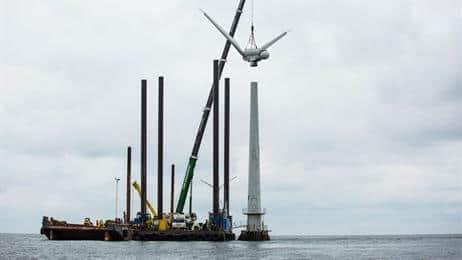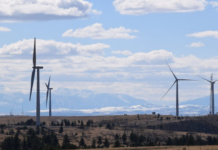After more than 25 years of operation, DONG Energy has decided to retire Vindeby, the world’s first offshore wind farm.
Vindeby Offshore Wind Farm, consisting of 11 wind turbines, was connected to the grid in 1991. The Danish wind project is situated close to shore in the low waters off Vindeby near Lolland.
Even though the wind farm is being decommissioned – and the turbines are small compared to current standards – the project has been of “vital importance” to the offshore wind industry, according to Leif Winther, who is responsible for DONG Energy’s Danish offshore wind farms.
“Vindeby Offshore Wind Farm is almost miniature-size in comparison with the giant projects which are now being realized in Northern Europe,” he says. “But without the experience gained from the world’s first offshore wind farm, we wouldn’t be where we are today. It’s fair to say that Vindeby is the cradle of the offshore wind industry and that this is where the industry was born.”
During its entire lifetime, Vindeby Offshore Wind Farm produced 243 GWh of power; this corresponds to what seven of the largest offshore wind turbines today can produce in a single year, says DONG Energy. The turbines for Vindeby were supplied by Bonus Energi – now Siemens Wind Power – and the foundations were produced by MT Højgaard.
DONG Energy says Vindeby also covered the annual power consumption of around 2,200 households. In comparison, DONG Energy’s future offshore wind farm off the east coast of England, Hornsea Project One – which, when ready for commissioning in a few years, will be the world’s largest offshore wind farm – will be able to supply green energy to approximately 1 million households, the developer says.
Furthermore, the offshore wind turbines at Vindeby are located 1.5 kilometers to 3 kilometers offshore. Today, offshore wind turbines are typically located much farther away from shore. In addition, when the wind turbines at Vindeby were installed in 1991, they were lifted into place in one piece, but when decommissioning begins this month, the blades, nacelle and tower will be dismantled and taken down individually by a mobile crane on board a jack-up vessel. The concrete foundations will be broken down on-site, mainly by hydraulic demolition shears, and collected afterwards, DONG Energy says.
In addition, when the wind turbines at Vindeby were installed in 1991, they were lifted into place in one piece, but when decommissioning begins this month, the blades, nacelle and tower will be dismantled and taken down individually by a mobile crane on board a jack-up vessel. The concrete foundations will be broken down on-site, mainly by hydraulic demolition shears, and collected afterwards, DONG Energy says.
All turbine components and foundations will be sent onshore to Nyborg Harbour, where the components will be reused as much as possible as spare parts for other wind turbines. Some of the blades will become part of a research project at DTU Risø, and others will be reused in a noise-barrier concept. One wind turbine will also become part of the exhibition at “Energimuseet” (the Danish Museum of Energy). Components that are not immediately reusable will be transported to a certified recovery company.
“Vindeby Offshore Wind Farm has played a decisive role in scaling up the technology and reducing the costs to a level that makes offshore wind attractive to many countries facing replacement of end-of-life coal-fired power plants with new green energy sources,” adds Winther.




